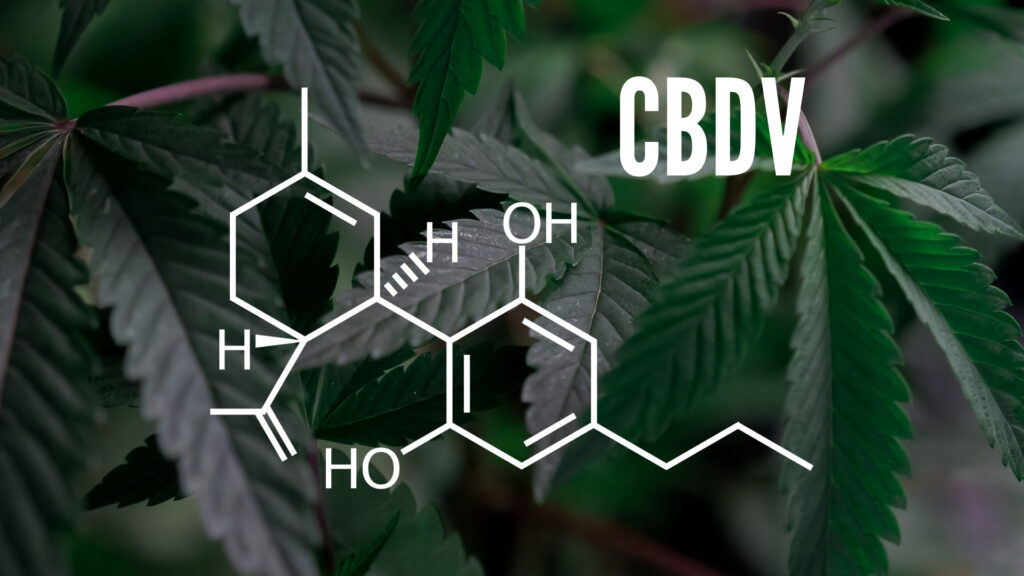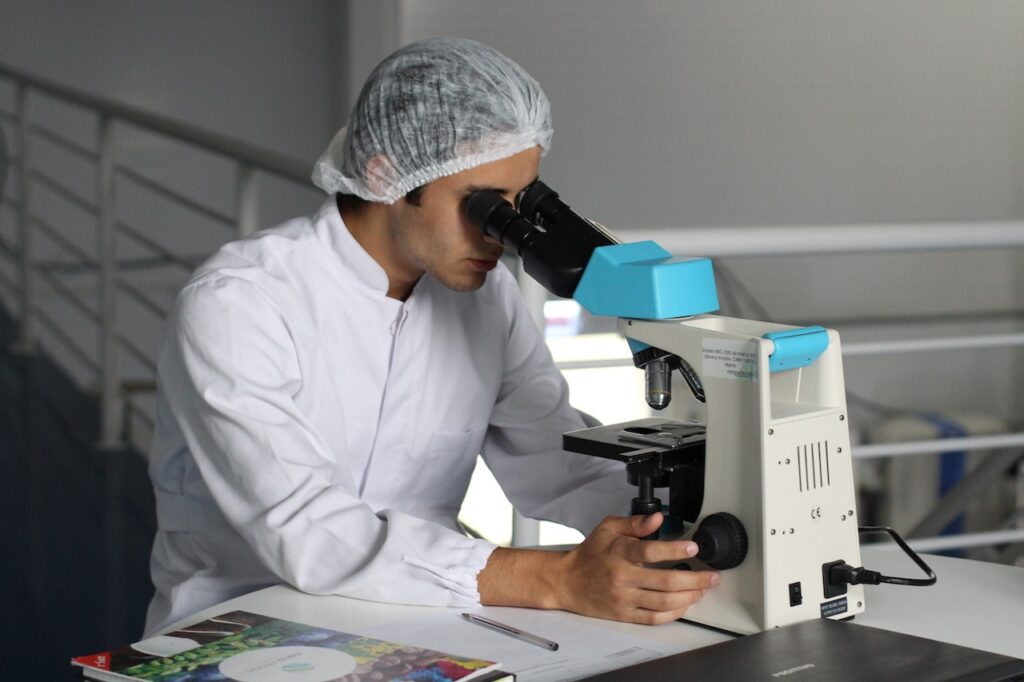When discussing cannabis compounds, it’s easy to get hung up on THC and CBD. They are, after all, the plant’s primary constituents. However, cannabis contains hundreds of compounds that, despite their minor presence, can have a significant impact on how the plant affects us. CBDV, or cannabidivarin, is one such chemical.
This ancient plant contains hundreds of compounds, many of which interact in unexpected ways to provide innumerable benefits. In this article, we’ll look at cannabidivarin, or CBDV, a highly underutilised cannabinoid with a lot of promise.

The cannabis plant produces over 100 cannabinoids, including CBDV. CBDV, like other “secondary” cannabinoids, is typically found in lower concentrations than THC and CBD, and is more prevalent in low-THC cannabis varieties such as hemp.
CBDV is a non-intoxicating cannabinoid, which means it does not produce the euphoric high or sleepy stone that we associate with THC-rich cannabis strains. CBD is a homolog of CBDV, and the two compounds have very similar chemical structures and mechanisms of action.
Cannabidivarian (CBDV) is a non-psychotropic homolog of one of the main cannabinoids, cannabidiol (CBD). On a molecular level, the structure of CBDV is so similar to CBD that they’re sometimes difficult to differentiate on lab tests.
Both compounds have the same chemical formula with seven double bond isomers but differ in the three-dimensional arrangement of their atoms.
CBDV and its mechanisms of action, like many cannabinoids, are still largely unknown. However, preliminary studies on this cannabinoid give us a good idea of how it might interact with the human body.
CBDV, like its cannabinoid cousin (CBD), has a low affinity for the cannabinoid receptors CB1 and CB2. This is one of the primary reasons why it does not produce the intoxicating effects commonly associated with cannabis.
According to research, cannabidivarin, like CBD, may act on other chemical pathways and interact with the human endocannabinoid system in a much more indirect manner. Clinical trials looking into CBDV’s efficacy in treating convulsions and epilepsy symptoms, for example, suggest that CBDV both activates and desensitises TRPV1 receptors (also known as capsaicin receptors), which are important in our ability to sense pain and temperature. CBDV may act on TRPV2 and TRPA1 receptors, according to other research.
All of these receptors are classified as transient receptor potential channels. These channels are embedded in the cell membrane and, when activated, allow ions (such as sodium) to enter the cell.
CBDV may also interfere with the activity of diacylglycerol lipase, one of the key enzymes involved in the synthesis of 2-AG, an endocannabinoid produced naturally by the body, according to research. However, it is unclear how CBDV achieves this.
CBDV has been the subject of numerous trials and studies. Unfortunately, we know even less about this cannabinoid’s mechanisms of action and therapeutic potential than we do about CBD.
Below, we’ll go over some of the CBDV research and see what it tells us about its function and potential. However, keep in mind that these are all preliminary results.

A study on the effects of CBDV on rats and mice was published in the British Journal of Pharmacology in 2013. The animals were given cannabis plant-derived extracts that were high in CBDV and also contained CBD, as well as pure forms of both cannabinoids (in various doses). An isobologram analysis was also used by the researchers to determine how the two cannabinoids interact and gain a better understanding of their individual effects on the body.
The rats and mice were then given pentylenetetrazole (a circulatory and respiratory stimulant), pilocarpine, and an audiogenic seizure model to induce seizures (in which the animals are placed in an isolated chamber and exposed to an acoustic stimulus that evokes a seizure). The researchers used this to assess the anticonvulsant potential of CBDV-rich extracts, and the isobologram analysis revealed that the cannabinoid delivered its effects without interacting with CB1 receptors.
In 2014, the ACS Chemical Neuroscience journal published a study on CBDV’s anticonvulsant potential. According to the findings of this study, CBDV’s effects were delivered via TRP channels (as described earlier).
Some studies have looked into CBDV’s therapeutic potential in addressing the core symptoms of autism spectrum disorder due to its ability to modulate the excitatory and inhibitory systems in the brain.
The journal Translational Psychiatry tested this premise in 2019 by looking at how CBDV affected glutamate and GAMA metabolites (markers of the brain’s inhibitory or excitatory systems) in both healthy people and patients with autism spectrum disorder. The study used magnetic resonance spectroscopy to measure glutamate and GABA+ levels in the brains of 34 male participants (17 with autism and 17 without) after treatment with a placebo and a single dose of 600mg of CBDV.
The study’s authors claim that CBDV had an effect on glutamate levels in both groups of participants’ brains. Unfortunately, its effects were not consistent across all individuals, and the authors concluded that more research was needed to properly determine CBDV’s potential as a treatment for autism spectrum disorder symptoms.
Many people report using cannabis to treat stomach upset, nausea, or vomiting. As a result, there is a growing interest in studying how cannabinoids interact with our bodies’ natural nausea response.
A comparative study examining CBDV’s antiemetic potential in animal models of nausea was published in the British Journal of Pharmacology in 2013. The researchers began by inducing nausea in lab rats with two inverse agonists of the CB1 receptor. They then conducted two experiments to determine whether CBDV and THCV induced or reduced nausea. Finally, the study claims that neither THCV nor CBDV acted as CB1 reverse agonists, and that as a result, the test subjects’ markers associated with upset stomach appeared to be reduced.

Rett syndrome is a rare genetic mutation that primarily affects women’s brain development. The condition is characterised by profound disabilities that can impair a person’s ability to speak, coordinate their body, grow and develop normally, and more.
Because the endocannabinoid system mediates many of the biological functions that are impaired by Rett syndrome, researchers decided to test the efficacy of cannabinoids in the treatment of this condition. A 2018 study published in the journal Neuropharmacology investigated the effects of CBDV on an animal model of Rett syndrome. After 14 days of CBDV treatment, researchers observed a general improvement in the mice’s health, as well as improvements in behavioural impairment and slowed brain atrophy.
CBDV has not been shown to have any negative side effects. However, this does not rule out the possibility of negative consequences. We simply need more research to determine the safety profile of this cannabinoid.